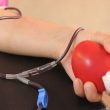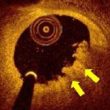A worldwide survey shows there is much room for improvement as regards transradial access procedures, particularly for the prevention of radial artery occlusion post-procedure. While in many places this has been a standard technique for some time now, other places are yet to evolve, and that is the result of this survey. In the past<a href="https://solaci.org/en/2018/12/10/less-bivalirudin-and-minimal-use-of-ultrasound-for-puncture-is-the-worldwide-trend-in-transradial-access/" title="Read more" >...</a>
Practical Management of Coronary Perforations
Coronary perforation has an incidence of 0.5% and it is associated with a 13-fold increase in in-hospital events and a 5-fold increase in 30-day mortality. This event is so catastrophic that its management has become indispensable knowledge to all interventional cardiologists. This accident is most frequently provoked by artery over-dilation caused by a balloon or<a href="https://solaci.org/en/2018/11/06/practical-management-of-coronary-perforations/" title="Read more" >...</a>
ESC 2018 | MATRIX: 1-Year Superiority of Transradial Access
Transradial access should be the access of choice in patients with acute coronary syndrome, while bivalirudin has not shown any benefit for this population. The long-term follow-up from the MATRIX (Minimizing Adverse Hemorrhagic Events by Transradial Access Site and Systemic Implementation of Angiox) trial confirms the results at 30 days: transradial access is here to stay<a href="https://solaci.org/en/2018/08/28/esc-2018-matrix-1-year-superiority-of-transradial-access/" title="Read more" >...</a>
Manual vs. Mechanical Compression after Transradial Catheterization
For patients undergoing transradial catheterization, whether puncture site compression is manual or mechanical has no significant difference as regards post procedural radial artery occlusion (RAO) rate. Hemostasis is shorter with manual compression, but it seems difficult to implement in the clinical practice. We could carry out an economical sub-analyzis of this study to find out<a href="https://solaci.org/en/2018/06/08/manual-vs-mechanical-compression-after-transradial-catheterization/" title="Read more" >...</a>
Antithrombotics after Venous Stenting: Rather Different from Coronary Artery Stenting
Should the Antithrombotic/antiplatelet therapy following 10.0 by 60 mm stent implantation to the subclavian vein of a chronic kidney patient be the same as one following a 3.0 by 18 mm stent implantation to the second segment of the left anterior descending artery of this same patient? The daily practice of many interventional cardiologists performing<a href="https://solaci.org/en/2018/05/24/antithrombotics-after-venous-stenting-rather-different-from-coronary-artery-stenting/" title="Read more" >...</a>
Tips to Prevent Radial Occlusion after Catheterization
The transradial access is the preferred access site for patients undergoing acute coronary syndrome. Compared to the transfemoral access site, it reduces the risk of all cause death, vascular complications and major bleeding. Radial artery occlusion is the most frequent vascular complication associated to this approach, though it rarely results in clinical consequences such as ischemia, given the<a href="https://solaci.org/en/2018/03/23/tips-to-prevent-radial-occlusion-after-catheterization/" title="Read more" >...</a>
The 10 Commandments of ESC’s New STEMI Guidelines
The authors have given an entertaining account of the most relevant points and differences between the new STEMI guidelines and the prior ones, from 2014. The article features 10 points resembling the ten commandments, which makes it easy to read, compared to the tedious task of reading the complete guidelines. 1) The emergency systems should help<a href="https://solaci.org/en/2018/01/30/the-10-commandments-of-escs-new-stemi-guidelines/" title="Read more" >...</a>
OCT Follow-Up of Plaque Erosion with Medical Therapy and Without Stenting
Most acute coronary syndromes (ACS) are caused by the following three different pathologies: Plaque rupture Plaque erosion Calcified nodule In daily clinical practice, all patients who experience them are treated with angioplasty, regardless of which of these physiopathologies led to the ACS in each case. Some early reports indicate that patients with plaque erosion might<a href="https://solaci.org/en/2018/01/25/oct-follow-up-of-plaque-erosion-with-medical-therapy-and-without-stenting/" title="Read more" >...</a>
Ischemic and Bleeding Risk After Primary Angioplasty
Patients with ST-segment elevation myocardial infarction who undergo primary angioplasty are at high risk for both ischemic and bleeding events, which affect significantly both morbidity and mortality. An optimal selection of antithrombotic therapies in terms of strength and duration must take into account the timing for the procedure, since the risk for these complications may<a href="https://solaci.org/en/2017/11/22/ischemic-and-bleeding-risk-after-primary-angioplasty/" title="Read more" >...</a>
Early Coronary Angiography in High-Risk Non-ST-Elevation ACS
Coronary angiography is essential for patients admitted with non-ST-elevation acute coronary syndrome, since it allows physicians to confirm the diagnosis, stratify the risk, and define the revascularization and antithrombotic management strategies. There is no doubt that these patients should be studied invasively, but the timing for that is still uncertain. Coronary catheterization within<a href="https://solaci.org/en/2017/10/09/early-coronary-angiography-in-high-risk-non-st-elevation-acs/" title="Read more" >...</a>







